Teaching methods have gone through revolutionary transformations in the last few decades. As students interact with technology boundlessly with the rise of the digital age, educators have critically engaged students with technology’s help.
If you are an educator or a student looking for modern teaching methods and how to cope with them, you are just at the right place. Besides thoroughly explaining the teaching methods and their benefits, this blog will help you understand how to implement them 365 days in your classes. So, let’s delve deeper:
Flipped Classroom
The flipped classroom is the most popular modern teaching technique. Also, this is the most proposed and tested teaching method since 1984. You would be amazed to know that Militsa Nechkina, a member of the USSR Academy of Pedagogical Sciences, suggested this teaching method way before the rise of the digital age.
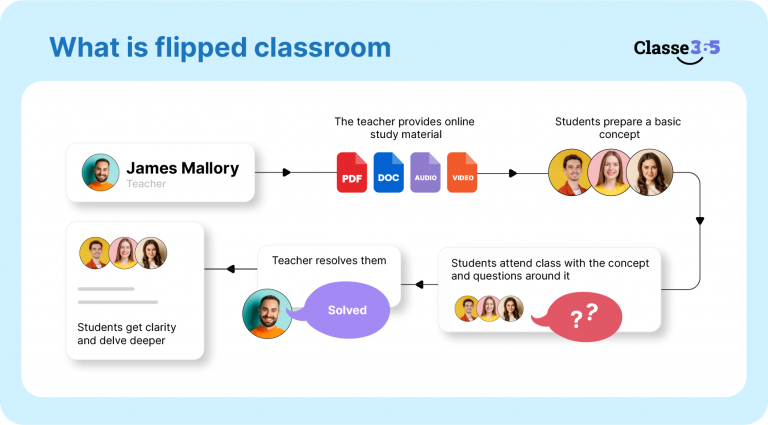
What is a flipped classroom?
While a traditional classroom introduces the students to the concepts and then they study the same independently at home, a flipped classroom is just the opposite. Here, students first learn the concept through explanatory pre-recorded videos and come to the classrooms to resolve questions and practice with a collaborative project or another activity that fits the scope of the subject.
See how Classe365 helps you with a flipped classroom feature.
How It Helps
Students take an active role and develop more autonomy in their learning. Instead of relying on the teacher to introduce them to the subject and do all the heavy lifting for them, students become self-teachers!
How Teachers Can Prepare for a Flipped Classroom
▪️ Prepare a schedule for the week that explains a thorough lesson plan. Thus, they will know what to study beforehand and on which day.
▪️ Record detailed videos with elements and live examples.
▪️ As students are already developing a basic idea of the concept, expect more consequential questions from them. So, prepare yourself to answer them correctly.
How Students Can Prepare for a Flipped Classroom
▪️ Go through the weekly lesson plan well.
▪️ Besides seeking help from your text and reference books, look for videos and relevant data on the internet.
▪️ Not everything available on the internet will help you get into the depth of the subject. So, be flexible and try to grasp what feels relevant. Remember, you always have your teacher to explain complex matters.
▪️ Question everything until you get to the core of the subject. Only ‘whys’ will help you understand ‘whats’.
Kinesthetic Learning
Kinesthetic learning is one of the oldest teaching methods of the human race. But, the digital age has polished and redefined it.
What is kinesthetic learning?
Here, teachers explain a concept through demonstrations and hands-on activities. Therefore, it’s best suited for practical subjects and skills where learners are expected to develop dexterity or construct things.
This innovative teaching method also applies to online classrooms where teachers focus on demonstrations and hands-on activities and learners practice simultaneously.
How It Helps
Tactile learning helps students get instant feedback from the teachers as the students are practicing alongside them. For instance, you can take any science laboratory of a school where students master skills through hands-on projects.
How Teachers Can Prepare for Kinesthetic Learning
Allow students enough time to grasp the concept.
Research on methods of accomplishing a task more efficiently.
Turn boring experiments into fun and engaging by narrating their background stories.
How students can prepare for Kinesthetic Learning
Research the subject beforehand so that you have a basic concept.
Try to be as collaborative with your classmates as you can. Only collaboration will empower you in the field of practical learning.
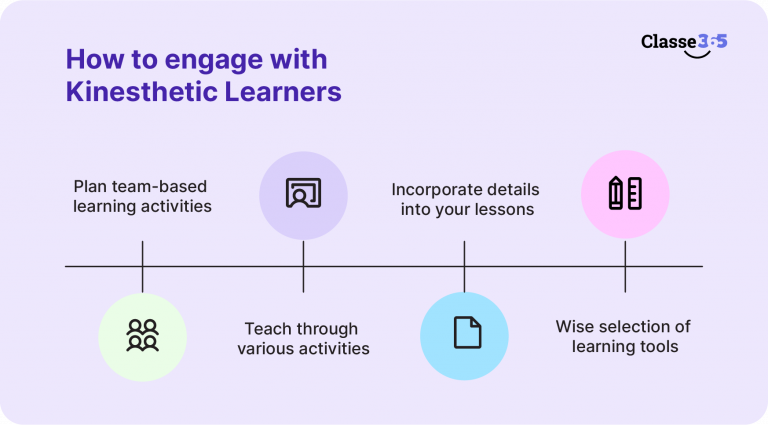
VAK Learning
VAK is the abbreviation for Visual, Auditory, and Kinesthetic learning. It broadens the learning horizon by including all sensory elements.
What is VAK learning?
Invented by Walter Burke Barbe and later developed by Neil Fleming in the 1920s, the VAK learning method divides students into three categories; visual learners, auditory learners, and kinesthetic learners.
Visual learners get maximum exposure to textbooks, diagrams, presentations, and infographics while auditory learners listen to podcasts, discussions, and videos. Kinesthetic learners delve into more interactive methods by acting out the content.
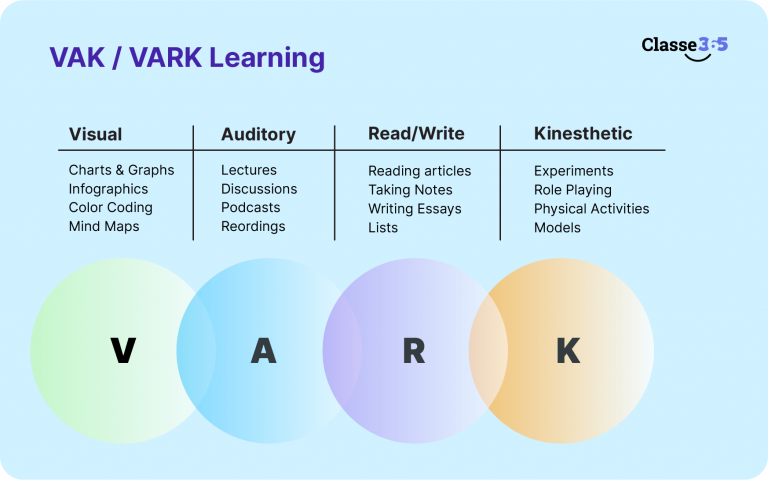
Create a VAK learning pipeline using an LMS.
How It Helps
VAK learning method allows space for every learner and effectively improves the learning experience and knowledge retention.
How Teachers Can Prepare for VAK Learning
VAK learnings demand sheer attention to detail from teachers. Teachers have to choose or record videos, and podcasts particularly where the complex concepts are explained simply.
Teachers must be adept with technology to handle videos and audio.
How Students Can Prepare for VAK Learning
You must know which learning method suits you best and be able to explain your needs to the teachers.
No matter what kind of learner you are. Taking notes is imperative to retain knowledge. Always remember to keep a notebook ready by your side.
Problem-based Learning
Innovative teaching methods in the modern classroom promise something beyond traditional learning. Problem-based learning is one of those promises.
What is problem-based learning?
In this learning method, students are given a problem before they are taught anything about it. That problem becomes their driving force to delve deeper and master the concept.
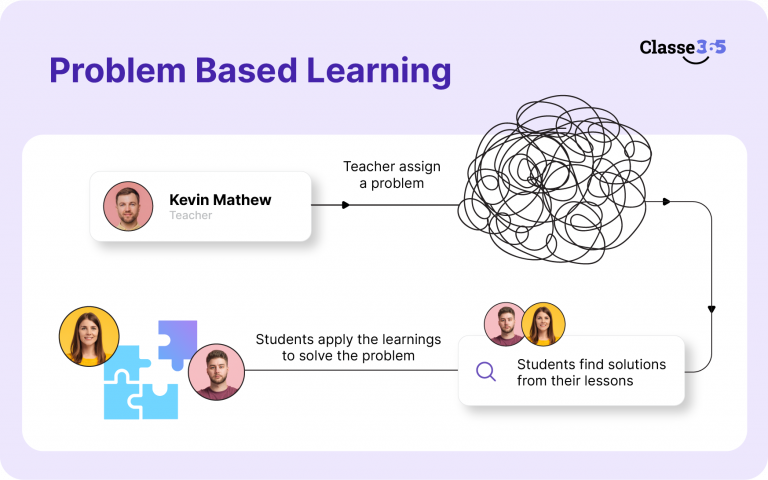
How It Helps
The learning process begins with a problem boosting students’ collaboration spirits. In their journey to reach the root of the problem, they learn how to communicate ideas. By helping students shape their thoughts, the process smoothens the execution. A gradual increase in difficulty motivates them to expand their knowledge from the basic to the advanced level.
How Teachers Can Prepare for Problem-based Learning
Start with a basic problem so that students can build a thread one after another and get to the ending point.
Make sure the problem is too out of the box. You must connect the problem with some previous lessons so that they at least have a context. Also, this will strengthen their ability to interconnect two subjects.
Develop a sense of gratification so that students are eager to take on more similar and bigger challenges. Classe365 has a private school network allowing students to collaborate and work together to solve this as a team even in remote learning.
How Students Can Prepare for Problem-based Learning
A solution exists before problems because every problem starts when the solution goes missing. So, the absence of a solution is the root of the problem. Therefore, try to connect the dots and back calculate. This will eventually lead you to the solution.
Collaboration is the key. Keep your communication as clear as possible and be ready with a go-getter approach.
Project-based Learning
Though quite similar to the problem-based method, project-based learning includes some initial steps that problem-based learning skips.
What is project-based learning?
Unlike problem-based learning, students have a context about the lesson in project-based learning. Teachers allot projects to students after teaching them a lesson.
How It Helps
Project-based learning is one of primary and high school’s first modern teaching methods that successfully created a collaborative learning ambiance. Children started learning the importance of taking up ownership of their roles while working as a team. They also understood how their decision impacted the whole team.
Set up a project for students on LMS.
How Teachers Can Prepare for Project-based Learning
Design projects that will add value to the student’s life. For instance, as a Geography teacher, you can ask them to reimagine a particular landscape and note down that region’s crops, lifestyle, and food habits depending on its soil and atmosphere.
How Teachers Can Prepare for Project-based Learning
Collect information from the internet.
Be as creative as possible.
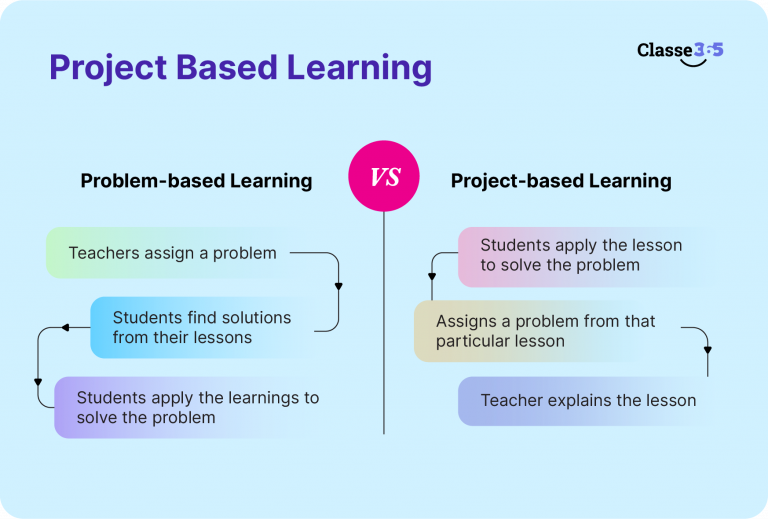
Game-based Learning
Play Store and Apple Store are filled with mind games. Education institutions are actively moving forward to a game-based learning approach. Learn why:
What is game-based learning?
This approach is quite self-explanatory. Games attract children as they are traditionally known as a distraction from the study. Thought leaders and educators have captured that pleasure point and converted games into innovative learning methods. For instance, a user-friendly LMS, Classe365 has a quiz option where educators can set up tasks as quizzes and use multiple other engaging gaming formats.
How It Helps
Games have the essence of instant gratification. The reward at the end motivates students and they engage more in it.
How Teachers Can Prepare for Game-based Learning
LMSes help educators in designing the games. So, choose the right LMS that offers some in-built game-based learning options.
Get proper training on how to set up tasks through games.
How Students Can Prepare for Game-based Learning
Do not consider this as studies. Attend these activities as games and get the most out of them.
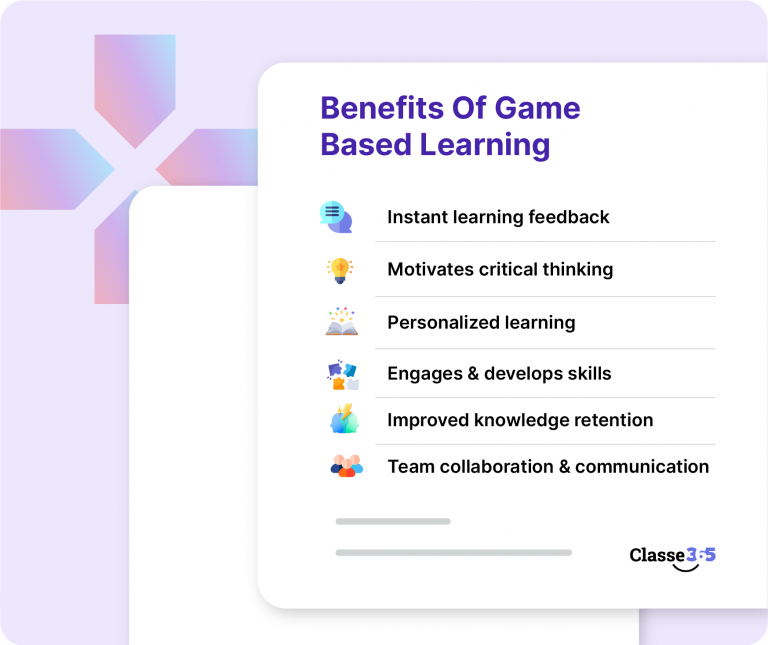
Inquiry-Based Learning
You have come this far after inquiring about some innovative teaching methods with examples. So, you must have understood by now how impactful inquiry-based learning can be.
What is inquiry-based learning?
In this method, the teacher asks an open-ended question or assigns a project and learners do their research to complete the project or form a theory. This task can be completed individually or in groups.
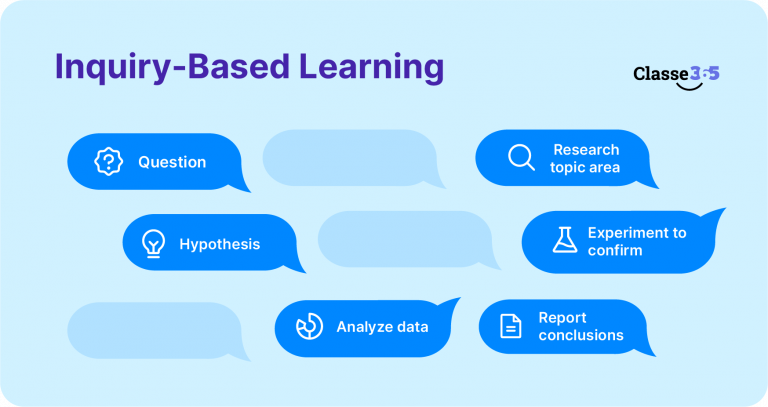
How It Helps
The method helps learners motivate learners to understand their boundaries by compelling them to think outside of the box. It develops essential analytical and reasoning skills along with curiosity. Students become resourceful and observant. On the other hand, this learning method enhances students’ communication and presentation skills. Speaking confidently about one’s findings brings the thought leaders out of them.
How Teachers Can Prepare for Inquiry-based Learning
Choose topics from social sciences to check their knowledge beyond the syllabus.
Help them think beyond boundaries with references.
How Students Can Prepare for Inquiry-based Learning
Polish your research skills by researching the topic and things around it.
The teacher does not want the correct answer. Rather, they want to know how you express your thoughts confidently even if you are not trained on the topic. So, be expressive and confident.
Thinking-based Learning
Teachers inspire students to become teachers and come to the front. Therefore, thinking-based learning is a modern teaching method every teacher should know. Let’s see how it works:
What is thinking-based learning?
This learning method inspires students to challenge their belief systems. Here, students ask questions about every fundamental thing and try to perceive their roots. Educators, therefore, do not recommend this method for primary or high schools. Universities are the ideal spaces to practice such learning methods.
How It Helps
Like inquiry-based learning, thinking-based learning pushes students to break boundaries. By deconstructing their primary faith, this learning method reshapes their thinking capability and allows them to be diplomatic and critical, contributing to their professional soft skills.
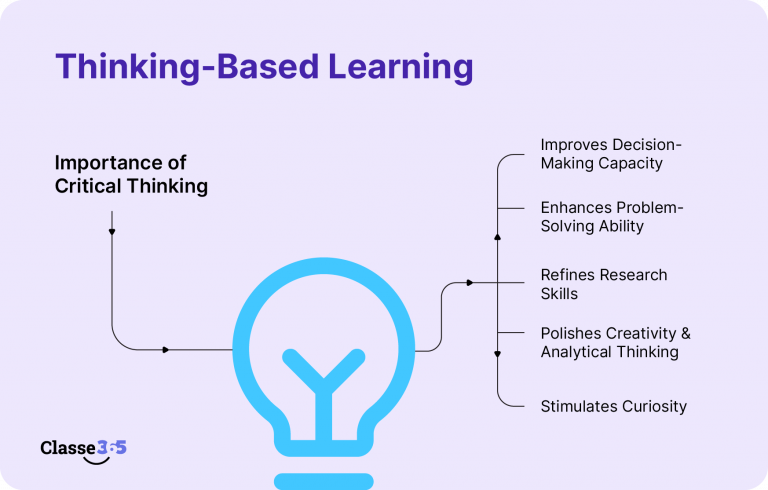
How Teachers Can Prepare for Thinking-based Learning
Be as much receptive to the ideas as you can.
Try not to force your perception.
How Students Can Prepare for Thinking-based Learning
Before you reach this learning module, you must go through a regular practice of researching, reading, and debating.
Besides letting your opinion flow, keep checking where you went wrong and where you could do better.
We have covered almost all Innovative teaching methods with examples. As an educator or a student, you must be familiar with all the learning methods, not only the popular ones. Therefore, some less-discussed learning methods are explained below:
Cooperative Learning: Much like collaborative learning, cooperative learning demands learners to grow together. This method helps students build interpersonal relationships with their fellow learners and take ownership of their decisions.
Competency-based Learning: Competency-based learning is a traditional approach where teachers use learner assessments and hands-on projects to confirm the learner has achieved the desired learning objectives. Now, they can move to the next advanced level of difficulty.
Competency-based learning is a personalized approach where the curriculum is designed by keeping the learner’s challenges in mind.
Independent Learning: Teachers do not play a pivotal role in this learning method. Students decide their subjects and their evaluation process. Mentors or facilitators support them with study materials and tools. This method requires self-motivation and, on a positive note, students get autonomy on their learning horizon.
Education, altogether, is a collaborative process. With sufficient technical support, educators form a better learning ambiance. Step up and unlock the future of education with innovative learning methods powered by Classe365. Experience seamless collaboration between educators and cutting-edge LMS technology.
Start your free trial today and transform your teaching!
